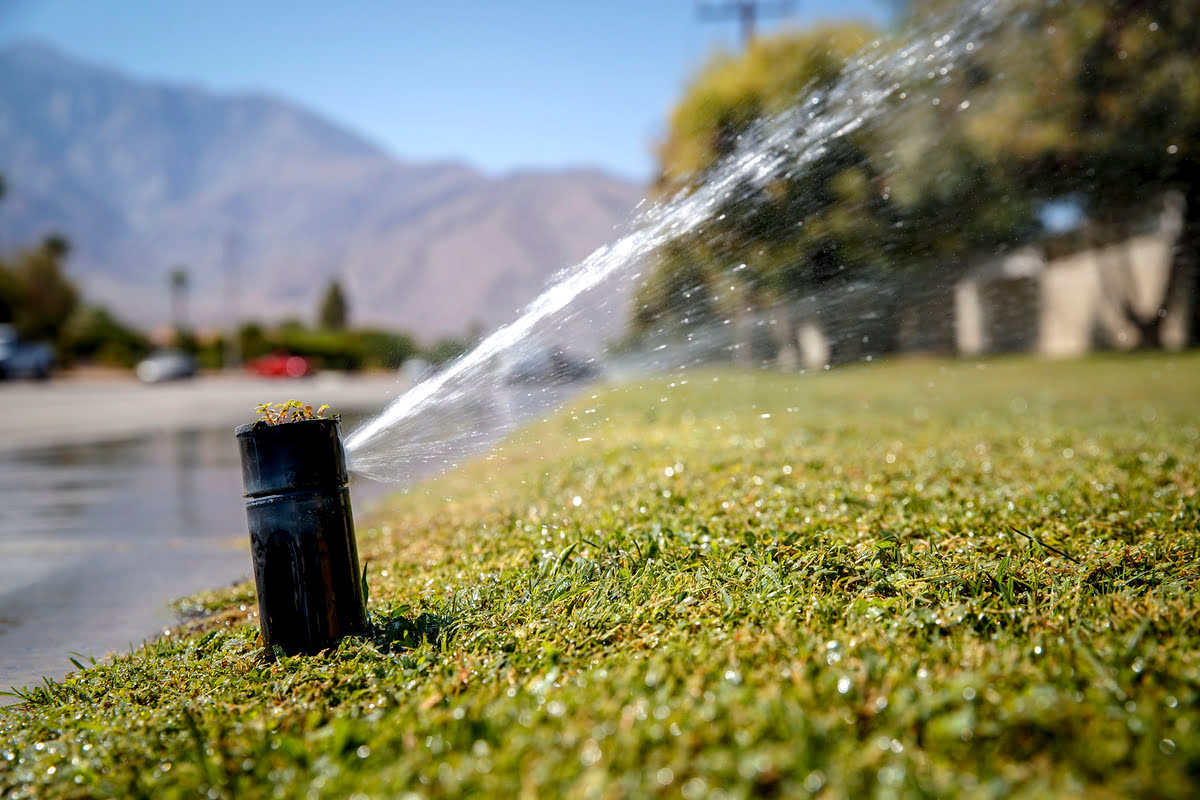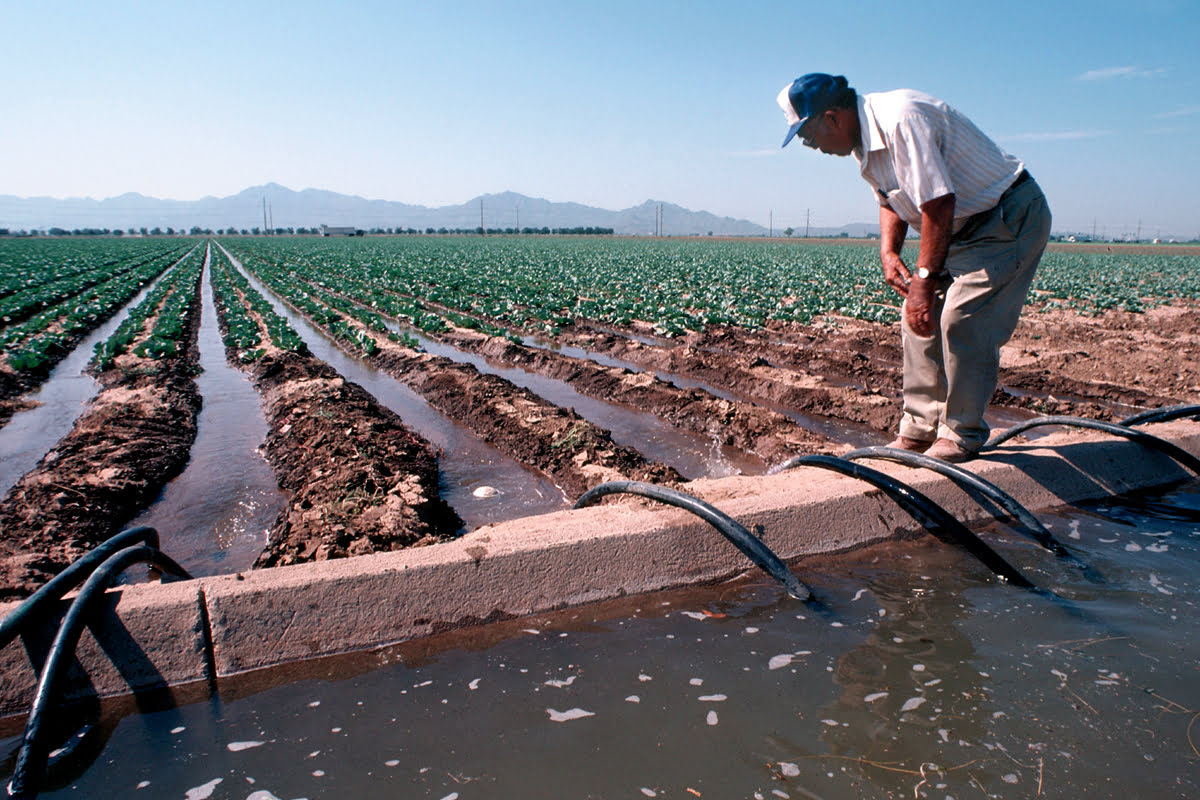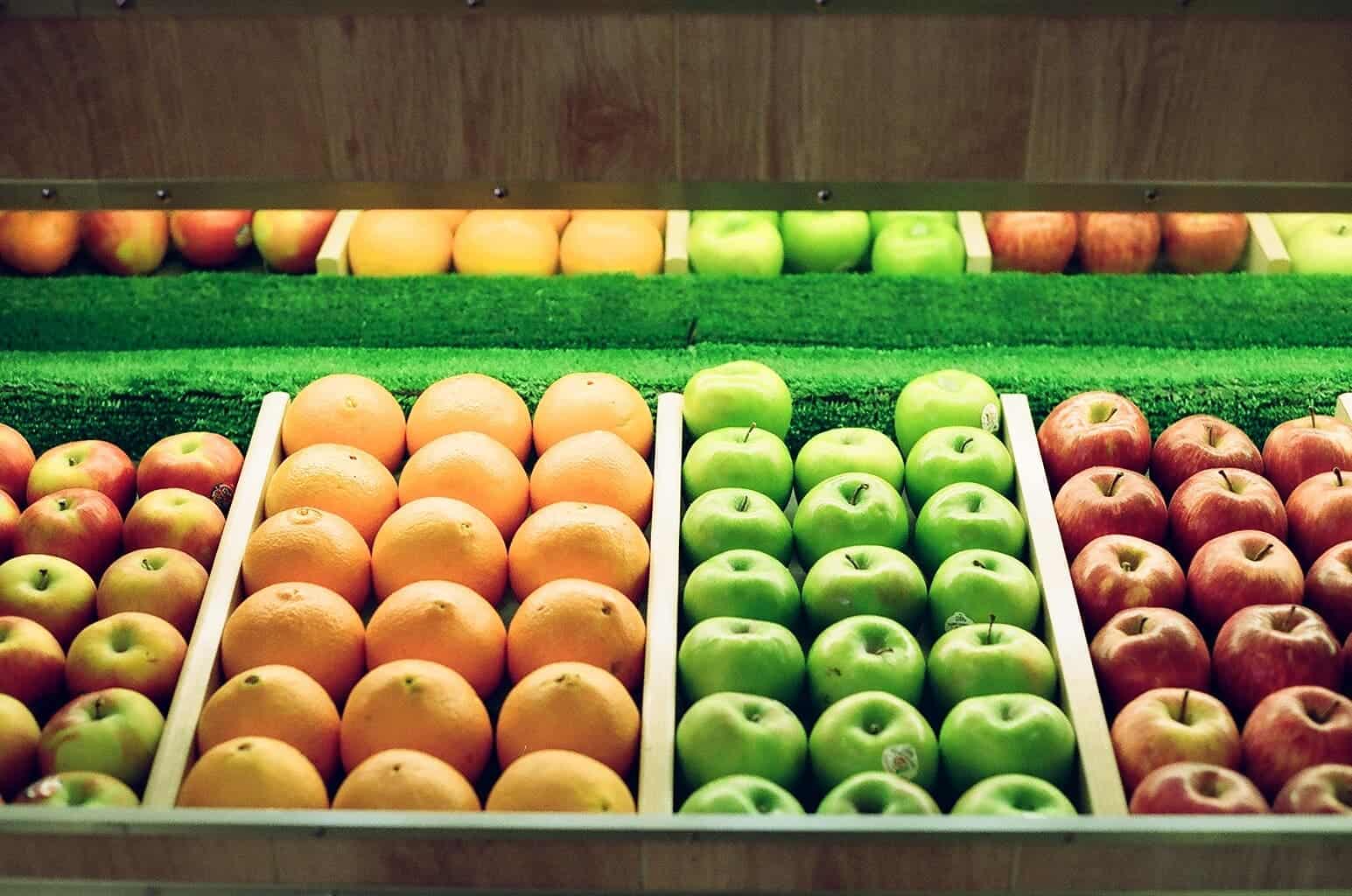Home>Gardening News and Trends>Gardening Trends>What Is The Most Efficient Irrigation Method?


Gardening Trends
What Is The Most Efficient Irrigation Method?
Modified: February 8, 2024
Learn about the most efficient irrigation method for your garden! Discover the latest gardening trends and maximize water conservation.
(Many of the links in this article redirect to a specific reviewed product. Your purchase of these products through affiliate links helps to generate commission for Chicagolandgardening.com, at no extra cost. Learn more)
Table of Contents
Introduction
Welcome to the world of gardening trends, where we explore the latest advancements in horticulture and share valuable insights to help you achieve your gardening goals. In this article, we will delve into the topic of irrigation methods and discover the most efficient techniques to ensure optimal water usage in your garden.
Irrigation is a vital aspect of gardening, as it plays a crucial role in providing plants with the necessary water for growth and development. However, with the increasing focus on sustainability and conservation, it is essential to adopt irrigation methods that minimize water wastage and maximize efficiency.
Traditional sprinkler irrigation systems have long been used in gardens and agricultural fields. While they are relatively easy to set up and provide uniform coverage, they can be inefficient due to high evaporation rates, wind drift, and overspray. As a result, there has been a growing interest in exploring alternative irrigation methods that offer better water conservation and improved plant health.
Drip irrigation is one such method that has gained popularity in recent years. It involves the use of small tubes, known as drip lines or emitters, to deliver a slow and steady supply of water directly to the plant’s root zone. This targeted approach minimizes water loss through evaporation and runoff, as well as reduces weed growth and disease spread. Drip irrigation systems can be automated, making them ideal for both home gardens and large-scale agricultural operations.
Another innovative irrigation technique is subsurface drip irrigation (SDI), which takes drip irrigation to the next level. With SDI, the drip lines are buried underground, delivering water directly to the plant’s roots. This method further reduces water loss and surface evaporation while promoting efficient nutrient uptake and healthier plant growth.
Traditional Sprinkler Irrigation
Traditional sprinkler irrigation is one of the most widely used methods for watering gardens, lawns, and agricultural crops. It involves the use of sprinklers, which distribute water in a spray pattern over a designated area. While this method is relatively easy to set up and provides uniform coverage, it is not necessarily the most efficient option.
One of the main drawbacks of traditional sprinkler irrigation is its high evaporation rate. As the water is sprayed into the air, it is susceptible to being lost to evaporation before reaching the plants’ roots. Additionally, the wind can cause water droplets to drift away from the intended target, leading to water wastage and uneven distribution.
Furthermore, traditional sprinkler irrigation can result in overspray onto non-targeted areas, such as sidewalks and driveways. This not only leads to watering unnecessary areas but also contributes to water runoff and potential pollution of nearby water bodies.
Despite these limitations, traditional sprinkler irrigation does have its advantages. It is relatively inexpensive to install and can cover large areas efficiently. It is also suitable for various types of soil and can be adjusted to accommodate different plant water requirements.
To improve the efficiency of traditional sprinkler irrigation, there are a few simple techniques that can be employed. One option is to use low-flow sprinkler heads or devices that restrict the water flow, reducing the overall amount of water used. Another approach is to schedule irrigation during early morning or late evening hours when the temperatures are cooler and evaporation rates are lower.
Regular maintenance of sprinkler systems is also important for optimal performance. This includes ensuring that the sprinkler heads are properly aligned, free of obstructions, and in good working condition. Additionally, regularly monitoring the soil moisture levels and adjusting the irrigation schedule accordingly can help prevent overwatering or underwatering.
Drip Irrigation
Drip irrigation is a highly efficient method of watering plants that has gained popularity among gardeners and farmers alike. Unlike traditional sprinkler irrigation, which distributes water in a spray pattern, drip irrigation delivers a slow and steady supply of water directly to the plant’s root zone.
This targeted approach ensures that water is delivered exactly where it is needed, minimizing water loss through evaporation and runoff. By directly applying water to the roots, drip irrigation promotes healthier plant growth and reduces the risk of weed germination and disease spread.
Drip irrigation systems are composed of small tubes, known as drip lines or emitters, that are placed near the base of the plants. These emitters release water in controlled drips, allowing for precise water application. The flow rate can be adjusted according to the specific needs of different plants, ensuring that each receives the appropriate amount of water.
One of the key advantages of drip irrigation is its water-saving potential. Compared to traditional sprinkler systems, drip irrigation can reduce water usage by up to 50%. This is due to the minimal evaporation and runoff associated with drip irrigation, as well as the targeted watering approach that avoids wasteful overspray.
In addition to water conservation, drip irrigation also offers other benefits. By keeping the foliage of plants dry, it helps prevent the spread of diseases that thrive in damp conditions. The gradual and consistent moisture provided by drip irrigation promotes deep root development, making plants more resilient to drought conditions.
Drip irrigation systems can be automated, using timers or sensors to control the watering schedule. This enables gardeners to maintain proper moisture levels without the need for constant monitoring. Furthermore, drip irrigation can be easily installed in various garden setups, including raised beds, container gardens, and landscaped areas.
While drip irrigation is a highly efficient and effective method, it does require regular maintenance to ensure optimal performance. This includes checking for clogged emitters, replacing worn-out parts, and monitoring the system for leaks. Proper filtration and periodic flushing of the system are also essential to prevent the buildup of sediment and debris.
Subsurface Drip Irrigation
Subsurface drip irrigation (SDI) is a cutting-edge irrigation method that takes drip irrigation to the next level. With SDI, the drip lines are installed below the soil surface, delivering water directly to the plant’s root zone. This innovative technique offers numerous advantages over traditional surface drip irrigation.
One of the main benefits of SDI is its superior water conservation capabilities. By placing the drip lines underground, SDI significantly reduces water loss through evaporation and surface runoff. This allows for more precise water application, ensuring that plants receive the necessary moisture while minimizing wastage.
SDI also helps to conserve water by reducing weed growth. Traditional surface drip systems may inadvertently water the soil surface, creating ideal conditions for weed germination. However, with SDI, water is delivered exclusively to the plant’s root zone, depriving weeds of the moisture they need to thrive. This leads to less competition for water and better overall water efficiency.
Another advantage of SDI is its potential to improve soil health. As water is delivered directly to the root zone, there is less moisture on the soil surface, reducing the risk of soil compaction and erosion. Furthermore, the continuous application of water in the root zone encourages deeper root growth, resulting in stronger and more resilient plants.
SDI systems are highly customizable and can be tailored to suit different soil types and plant varieties. The spacing and depth of the drip lines can be adjusted to accommodate specific plant requirements, ensuring that water reaches the roots effectively. This flexibility makes SDI suitable for a wide range of applications, from home gardens to large-scale agricultural operations.
While SDI offers numerous benefits, it does require careful installation and maintenance. Proper design and placement of the drip lines are crucial for optimal performance. It is essential to consider factors such as soil type, plant spacing, and water quality when designing an SDI system.
Regular maintenance is also necessary to ensure the longevity and efficiency of the SDI system. Periodically flushing the lines to prevent clogging, monitoring for leaks, and ensuring proper filtration are all important maintenance tasks. Additionally, monitoring soil moisture levels and adjusting irrigation schedules accordingly can help optimize water usage.
With its exceptional water conservation properties and ability to promote healthier plant growth, subsurface drip irrigation is a modern irrigation method worth considering for both residential and agricultural applications.
Center Pivot Irrigation
Center pivot irrigation is a widely used method for watering large agricultural fields. This irrigation technique involves the rotation of a large sprinkler system, resembling a giant mechanical arm, around a central pivot point. The sprinklers release water as the system moves in a circular pattern, providing uniform coverage to the crops.
One of the key advantages of center pivot irrigation is its efficiency in covering large areas. The system can span across hundreds of acres, providing water to a considerable amount of crops in a single operation. This makes it a popular choice for commercial farming, where efficiency and productivity are crucial.
Center pivot irrigation offers several other benefits. By applying water directly to the crops’ root zones, it minimizes water loss through evaporation. The ability to provide consistent and controlled watering helps promote healthier plant growth and maximize yield potential.
In addition to water savings, center pivot irrigation can help manage fertilizer application. Some systems are equipped with options for injecting fertilizers or other agricultural inputs directly into the water stream. This allows for precise and targeted nutrient delivery, reducing waste and optimizing plant nutrient uptake.
Another advantage of center pivot irrigation is its adaptability to various field layouts. It can be designed to accommodate different crop types, row spacings, and soil conditions. The flexibility of the system allows farmers to customize their irrigation strategies based on specific needs, ultimately improving water and resource management.
While center pivot irrigation has many benefits, it does have some considerations to keep in mind. The initial cost of installing a center pivot system can be significant, including expenses for equipment purchase, installation, and maintenance. The availability and quality of a water source, such as a well or a reservoir, is also a factor that needs to be taken into account.
Regular maintenance is essential to ensure the smooth operation of center pivot systems. This includes regular inspections, cleaning of the sprinkler heads, and monitoring for any potential structural issues. It is also important to adjust the system’s settings based on crop requirements, weather conditions, and any changes in the field layout.
Overall, center pivot irrigation offers an efficient and effective solution for irrigating large-scale agricultural fields. Its ability to provide uniform coverage and precise water application contributes to optimal crop growth and water conservation.
Furrow Irrigation
Furrow irrigation is an age-old method of delivering water to crops by creating small channels or furrows between crop rows. This technique relies on gravity to move water along the furrows, saturating the soil and providing moisture to the plants’ root zones.
One of the main advantages of furrow irrigation is its simplicity and low cost. It requires minimal equipment and can be easily implemented in various agricultural settings. Furrow irrigation is particularly common in row crops such as corn, soybeans, and cotton.
Another benefit of furrow irrigation is its flexibility in accommodating different soil types and topographies. The furrows can be adjusted to match the spacing and needs of different crops, allowing for efficient water application. Additionally, furrow irrigation can be used effectively on sloped terrains where other irrigation methods may be more challenging to implement.
While furrow irrigation has been widely used for many years, it does have some limitations. One major issue is the potential for water runoff and soil erosion. If the furrows are not properly constructed or maintained, water can flow too quickly, leading to wasteful runoff and the loss of valuable topsoil. Sediment and nutrients can also be carried away by the runoff, resulting in environmental concerns.
In recent years, efforts have been made to improve the efficiency of furrow irrigation. One technique is the use of surge irrigation, where water is alternately applied and allowed to recede in cycles. This helps to reduce runoff and increase water infiltration while ensuring that the plants receive adequate moisture.
Additionally, modern technology such as soil moisture sensors and water flow meters can be incorporated into furrow irrigation systems to optimize water usage. By monitoring soil moisture levels and tracking water application rates, farmers can make informed decisions about when and how much water to apply, reducing water waste and improving overall efficiency.
Proper management and maintenance of furrow irrigation systems are important for optimal performance. Farmers need to carefully monitor water applications, manage soil erosion, and regularly inspect and maintain the furrow structure. Adjustments to furrow dimensions, water flow rates, and irrigation timing can also be made to improve efficiency and water conservation.
While furrow irrigation may not be the most water-efficient method available, it remains a practical and widely used technique in many agricultural regions. With proper management and ongoing improvements, furrow irrigation can continue to play a valuable role in supplying water to crops while minimizing water waste.
Surface Irrigation
Surface irrigation is a traditional method of watering crops that involves the flooding or furrowing of fields to distribute water across the soil surface. This method relies on gravity to move water from the source to the plants’ root zones, providing the necessary moisture for growth.
One of the key advantages of surface irrigation is its simplicity and low cost. It requires minimal equipment and can be easily implemented in various agricultural settings. Surface irrigation is commonly used in a wide range of crops, including rice, wheat, and vegetables.
One benefit of surface irrigation is its ability to effectively distribute water over large areas. By flooding the fields or creating furrows, water is made available to the entire plant root zone, ensuring adequate moisture for plant growth and development. This method is particularly suitable for crops that require consistent soil saturation.
Surface irrigation is also adaptable to different soil types. It can be adjusted to accommodate the soil’s infiltration rate by controlling the flow rate and depth of water application. This flexibility allows farmers to take advantage of varying soil characteristics and maximize water efficiency.
Despite its benefits, surface irrigation does have some limitations. One challenge is the potential for water loss through evaporation and runoff. The exposed water surface is susceptible to evaporation, particularly in hot and arid climates. Additionally, if the soil cannot absorb the water quickly enough, it may lead to runoff, which can result in soil erosion and nutrient loss.
To mitigate these challenges, farmers can employ water management techniques to improve the efficiency of surface irrigation. These techniques include proper land leveling to minimize ponding and promote uniform water distribution, as well as strategic timing to avoid excessive evaporation and runoff. Using cover crops or mulching can also help reduce evaporation and improve water retention in the soil.
Modern technology can further enhance surface irrigation efficiency. Sensor-based irrigation systems and real-time monitoring can provide valuable data on soil moisture levels and irrigation needs. This information allows farmers to make informed decisions, optimizing water usage and reducing wastage.
Regular maintenance and monitoring are key to successful surface irrigation. Fields and channels should be kept free of obstructions such as weeds or debris to allow for smooth water flow. Evaluating the performance of the system, monitoring soil moisture, and adjusting irrigation schedules are all important practices to optimize water usage.
While surface irrigation may not be the most water-efficient method available, it remains a practical and widely used technique in many agricultural regions. With proper management, maintenance, and modern technology, surface irrigation can continue to play a valuable role in supplying water to crops while minimizing water waste.
Comparison of Irrigation Methods
When it comes to choosing the most efficient irrigation method for your garden or agricultural field, it’s important to consider the various options available and their individual benefits and limitations. Let’s compare some of the common irrigation methods to help you make an informed decision.
Traditional sprinkler irrigation, while easy to set up and providing uniform coverage, can be inefficient due to high evaporation rates, wind drift, and overspray. It is best suited for large open areas and crops with less stringent water requirements.
Drip irrigation, on the other hand, offers targeted water delivery directly to the plant’s root zone, minimizing water loss through evaporation and runoff. It is highly efficient, reduces weed growth, and can be customized to individual plant needs. Drip irrigation is ideal for home gardens, container plants, and row crops.
Subsurface drip irrigation takes drip irrigation to the next level by burying the drip lines underground. This technique further reduces water loss and surface evaporation while promoting efficient nutrient uptake and healthier plant growth. It is beneficial for a variety of crops and can be automated for ease of use.
Center pivot irrigation is a popular choice for large agricultural fields. It covers vast areas efficiently, provides uniform coverage, and can manage fertilizer application. It is best suited for flat terrain and large-scale farming operations where quick and efficient irrigation is required.
Furrow irrigation is a simple and cost-effective method that relies on gravity to move water along furrows created between crop rows. It is suitable for a wide range of soil types and can accommodate various crop requirements. However, it may result in water runoff and requires regular monitoring to prevent soil erosion.
Surface irrigation involves the flooding or furrowing of fields to distribute water across the soil surface. It is straightforward, low-cost, and suitable for large areas but may suffer from water loss through evaporation and runoff. With proper land leveling and timing, surface irrigation can be efficient for crops that require consistent soil saturation.
The choice of irrigation method ultimately depends on the specific needs of your garden or field. Factors such as water availability, crop type, soil conditions, and budget should all be considered in the decision-making process. Incorporating modern technology, proper maintenance, and water management techniques can further enhance the efficiency of any irrigation method chosen.
By selecting the most appropriate irrigation method and implementing efficient practices, you can ensure optimal use of water resources while promoting healthy plant growth and maximizing crop yield.
Factors Affecting Irrigation Efficiency
Several factors can influence the efficiency of an irrigation system and the overall effectiveness of water usage. Understanding these factors can help optimize irrigation practices and minimize water waste. Here are some key factors that affect irrigation efficiency:
1. Soil type and structure: The type and structure of the soil play a crucial role in determining its water-holding capacity and drainage capabilities. Sandy soils tend to drain quickly, requiring more frequent watering, while clay soils can hold water for longer periods. Understanding the soil’s characteristics helps in determining the appropriate irrigation method and scheduling.
2. Crop water requirements: Different plants have varying water needs at different stages of growth. Understanding the specific water requirements of each crop allows for proper irrigation scheduling and prevents under or overwatering. Consulting with agricultural experts or using plant water requirement guidelines helps minimize water waste.
3. Climate and weather conditions: Climate and weather conditions such as temperature, humidity, wind, and solar radiation impact evaporation rates and plant water requirements. Adjusting irrigation schedules to account for these conditions helps optimize water usage and prevent water loss due to evaporation.
4. Irrigation system design and maintenance: The design and maintenance of the irrigation system play a crucial role in ensuring efficient water distribution. Regular inspections and maintenance tasks, such as cleaning filters, repairing leaks, and adjusting sprinkler heads, help prevent water loss and maximize irrigation efficiency.
5. Irrigation method selection: Choosing the right irrigation method based on the specific needs of the crop and the field is essential for water efficiency. Drip irrigation and subsurface drip irrigation offer targeted water delivery, reducing water loss through evaporation and runoff. Center pivot irrigation and surface irrigation are more suitable for larger fields and specific crop types.
6. Water management techniques: Implementing water management techniques can help improve irrigation efficiency. These techniques include using soil moisture sensors to determine when to irrigate and how much water to apply, applying mulch to reduce evaporation and soil moisture evaporation, and implementing strategies such as surge irrigation to minimize runoff.
7. Monitoring and data analysis: Regularly monitoring soil moisture levels, tracking water usage, and analyzing data related to irrigation practices are important for identifying areas that need improvement. This data-driven approach allows for making informed decisions regarding irrigation scheduling, system modifications, and water management strategies.
8. Education and training: Providing education and training to farmers, gardeners, and irrigation system operators on best practices for water-efficient irrigation is crucial. Knowledge about proper irrigation techniques, water-saving strategies, and the latest technology advancements ensures that water is used efficiently and effectively.
By considering these factors and implementing water-saving practices, it is possible to optimize irrigation efficiency, minimize water waste, and promote sustainable water management in agriculture and gardening.
Conclusion
Efficient irrigation is essential for sustainable gardening and agriculture, as it ensures the optimal use of water resources while promoting healthy plant growth. In this article, we explored various irrigation methods, including traditional sprinkler irrigation, drip irrigation, subsurface drip irrigation, center pivot irrigation, furrow irrigation, and surface irrigation.
Each irrigation method has its own advantages and limitations, making it important to consider factors such as crop type, soil characteristics, water availability, and budget when choosing the most suitable option. Drip irrigation and subsurface drip irrigation offer targeted water delivery and minimize water loss through evaporation and runoff, making them highly efficient options. Center pivot irrigation is suitable for large agricultural fields, providing uniform water coverage and the potential for fertilization. Furrow irrigation is a cost-effective method that can adapt to various soil types, while surface irrigation can be used for large-scale applications with proper land leveling and timing.
Factors such as soil type, crop water requirements, climate, irrigation system design and maintenance, water management techniques, and data analysis all influence the efficiency of irrigation practices. Understanding and monitoring these factors allows for better water management and the prevention of water waste.
By implementing efficient irrigation methods, utilizing modern technology, and practicing water-saving techniques such as soil moisture monitoring, mulching, and proper system maintenance, we can maximize irrigation efficiency and minimize water loss. Education and training are key in ensuring that farmers, gardeners, and irrigation system operators have the knowledge and skills to make informed decisions and implement best practices for water-efficient irrigation.
In conclusion, selecting the appropriate irrigation method, considering the relevant factors, and implementing efficient practices are essential for optimizing water usage, enhancing plant growth, and promoting sustainable gardening and agriculture.








